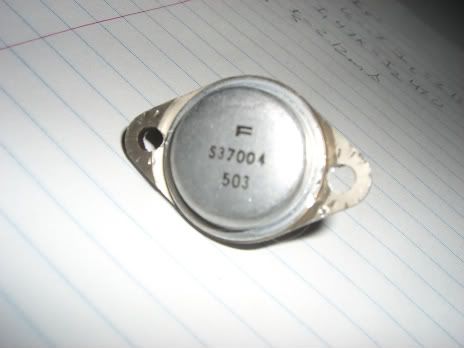I have a TO-3 package transistor that I pulled out of an EHX Mike Matthews Dirt Road Special (schematic attached). It's supposed to be the PNP in the output stage, the NPN is a 2N3055 which appears to work fine. In testing this transistor (out of the circuit) with a multimeter, I measure a very low resistance when the common probe is on the collector and the positive probe is on the base, and a very high resistance in any other configuration. To me that suggests that this is an NPN with a burned out base-emitter junction.
Here is a picture: I think it might be a 2N5038 (which most sites list as an NPN, although I found a General Diode datasheet which lists a 2N5038 as a PNP in a TO3 package), but I'm just not sure. The markings are cryptic. Is it a Fairchild part? I could not find any information on these markings.

At any rate, it seems like a safe bet that I can just replace it with an MJ2955 but I am curious as to what this transistor is, and if it is in fact an NPN how it got in the circuit.
Here is a picture: I think it might be a 2N5038 (which most sites list as an NPN, although I found a General Diode datasheet which lists a 2N5038 as a PNP in a TO3 package), but I'm just not sure. The markings are cryptic. Is it a Fairchild part? I could not find any information on these markings.

At any rate, it seems like a safe bet that I can just replace it with an MJ2955 but I am curious as to what this transistor is, and if it is in fact an NPN how it got in the circuit.

 It's a "blackback" from the late 70s with a 1777 cone so apparently it's not collectable or anything, but it's still a bummer since that is a major reason I bought this amp.
It's a "blackback" from the late 70s with a 1777 cone so apparently it's not collectable or anything, but it's still a bummer since that is a major reason I bought this amp.
Comment